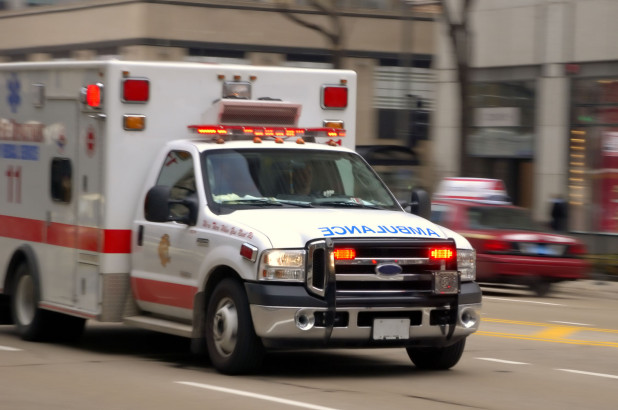We’ve all seen ambulances and firetrucks run through red lights when transporting a patient, and we’ve all seen police cars “break” the rules of the road. What are the rules if you’re involved in a crash with an emergency vehicle? Are they different from the regular rules? It depends.
Were The Emergency Vehicle’s Flashing Lights and Sirens On?
When an emergency vehicle does not have its flashing lights or sirens on, it is just like any other vehicle on the road. The driver gets no special privileges and is held to the same duties as any other driver, meaning he or she must follow the Rules of the Road and exercise reasonable care.
What If A Vehicle Is Responding To An Emergency?
Then it should have had its flashing lights and sirens on. Emergency situations include responding to time-sensitive medical issues, responding to fire alarms, and chasing crime suspects. When an emergency vehicle has its flashing lights and sirens on during these situations, the driver can “break” the regular rules. He or she may park on the roadway, go through a red light or stop sign, go faster than the speed limit, drive the wrong way on a road, and turn from the wrong lane.
These emergency vehicle privileges are not unlimited. Emergency vehicle drivers still must drive with “due regard for the safety of all persons.” “Due regard” is a flexible standard that considers the circumstances of the emergency. More specifically, it matters what the driver knows about the emergency. For example, ambulance drivers get more leeway when they are transporting heart attack patients than they do when transporting someone with a broken finger.
Over the years, courts have provided more and more clarity about what counts as “due regard” for an emergency vehicle driver. Perhaps the most common type of collision between emergency vehicles and regular vehicles is the intersection accident. Emergency vehicle drivers can never go through a red light/stop sign and into an intersection without looking out for other motorists. Regular drivers who have a green light have a right to assume they can safely pass through an intersection unless they are warned of the emergency vehicle’s approach. Emergency vehicle drivers must be aware that other drivers approaching intersections may not be able to see or hear them coming due to visual obstructions or loud noises, such as construction work. Likewise, when an emergency vehicle driver’s view is obstructed, they must be more cautious when entering an intersection. Emergency vehicle drivers are trained to drive in dangerous situations, and they are more likely to be on alert of dangerous conditions (such as the possibility of someone coming into the intersection when they have a green light) than regular drivers. It is possible for an emergency vehicle driver to be found at fault for an intersection crash simply because they were driving too fast.
What Are My Duties When Emergency Vehicles Are Around?
Under Georgia law, when emergency vehicles are approaching with their flashing lights and sirens are on, regular drivers are required to yield the right of way and move their vehicles parallel to, and as close as possible to, the curb on the right side of the road. Regular drivers are required to stay in that spot until the emergency vehicle has passed. If a regular driver violates this rule, the emergency vehicle driver has a good argument that the regular driver is at least partially at fault.
Legal issues surrounding crashes with emergency vehicles are more complicated than those involved in regular crashes. The attorneys at Rafi Law Firm have the experience to show that emergency drivers are at fault for these crashes, even though they get special privileges. Call us at 404-800-9933 or click here for a free consultation.


